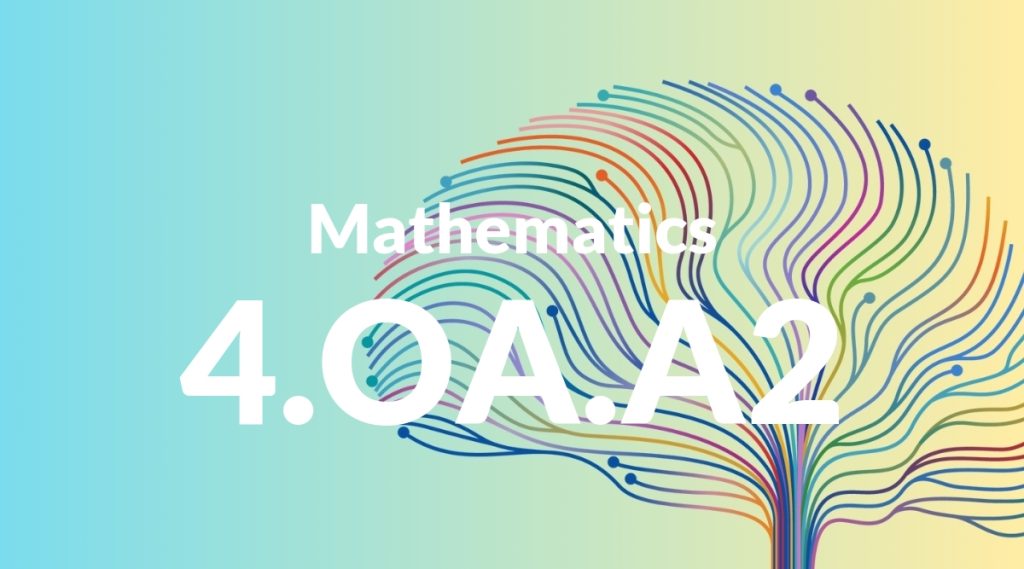Standard: 4.OA.A2 – Multiply or divide to solve word problems involving multiplicative comparison, e.g., by using drawings and equations with a symbol for the unknown number to represent the problem, distinguishing multiplicative comparison from additive comparison.1
Grade level: Grade 4
Subject: Mathematics
Domain: Operations & Algebraic Thinking
Teacher Overview
This standard focuses on helping students understand and solve word problems that involve multiplicative comparison. This is an important skill as it lays the foundation for more advanced algebraic thinking and problem-solving abilities. By mastering this standard, students will be better prepared to tackle more complex mathematical concepts in the future. Students should have a solid grasp of basic multiplication and division, as well as experience with simple word problems and the use of symbols to represent unknown quantities.
After mastering this standard, students will be equipped to solve more complex word problems and develop a deeper understanding of algebraic thinking. This will prepare them for future mathematical concepts such as fractions, decimals, and ratios.
Common Misconception 1
A common misconception is that students may confuse multiplicative comparison with additive comparison. They might think that multiplying or dividing is the same as adding or subtracting, which can lead to incorrect solutions.
Intervention 1
To address this misconception, use visual aids and concrete examples to clearly differentiate between multiplicative and additive comparisons. Practice problems that explicitly highlight the differences can also be helpful.
Common Misconception 2
Another common misconception is that students may struggle with representing the unknown number with a symbol in equations. They might find it challenging to set up and solve equations that involve an unknown variable.
Intervention 2
Provide students with ample practice on simpler equations before introducing more complex problems. Use manipulatives and visual aids to reinforce the concept of using symbols to represent unknowns, and gradually increase the difficulty level of the problems.
Prerequisite Knowledge
Students should have a basic understanding of multiplication and division, including the ability to solve simple multiplication and division problems. They should also be familiar with basic word problem strategies and the concept of using symbols to represent unknown numbers.
Subsequent Knowledge
After mastering this standard, students will develop the ability to solve more complex word problems involving multiple steps and operations. They will also gain a deeper understanding of algebraic thinking, which will prepare them for more advanced topics in mathematics such as fractions, decimals, and ratios.
Instructional Activities
- Use visual aids to demonstrate multiplicative comparison.
- Create word problems that involve real-world scenarios.
- Use manipulatives to represent unknown numbers in equations.
- Practice distinguishing between multiplicative and additive comparisons.
- Gradually increase the complexity of word problems.




